- Personalization,
- Content
7 Effective Ways of Website Content Personalization to Create Compelling Customer Experiences

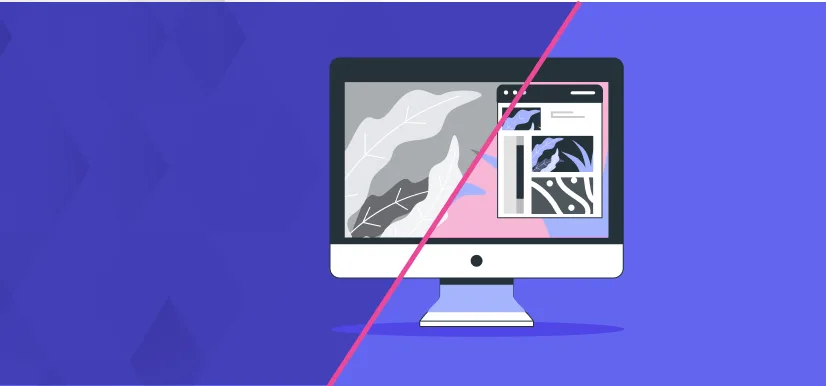
One-size-fits-all is not the case anymore in today's world.
Competition is fierce. Successful businesses are trying to deliver the right message to the right person at the right time by the right channel.
Do you think Amazon would become the Amazon without personalization?
Or Netflix.
Companies like Amazon and Netflix have shown that dynamic sites with effective personalization engines outperform static websites in the following ways:
higher trust and customer loyalty
higher conversion rate and revenue
higher customer lifetime value by a higher repeat rate
Amazon makes approximately $1 billion per day from personalized recommendations due to its well-known personalization engine. Amazon is always looking for new ways to use personalization, such as a current program that sends items that customers are likely to buy to the nearest distribution center before adding them to their cart.
Personalized websites are dynamic websites that show tailored content to the visitors based on various data signals - such as demographics, geographics, behavioral data, psychographics, firmographics, and so on.
When it's done right, personalization can increase the conversion rate by delivering the specific customer experience for each visitor.
Here, in this post, we will discuss some of the best practices and tips for using website content personalization to delight your customers and enhance user experiences.
Personalization Starts with Segmentation
The first step to effective website content personalization is to know your customer. If you don't, then how can you speak their language and create a personalized experience for them? The second step is to cater to the content of your website pages based on what customers are searching for.
The more you know about your customers, the better you can serve them and give them what they want. When it comes to marketing, customer segmentation will help you determine which message resonates best with each of your target audiences.
There are different types of data you can use to segment your customers:
Behavioral Data
Geographic Data
Demographic Data
Psychographic Data
Firmographic Data
Technographic Data
It has been noted that in the past few years, consumers have become more demanding. They want to be heard and respected by the brands they buy from. This is why web content personalization is a key strategy for marketers to create customer experiences.
In order to make your customers feel valued, you need an understanding of what type of experience they are looking for on your site when performing certain tasks.
Website personalization takes many forms, including but not limited to: headlines, CTAs, visuals, blog posts, etc. The idea behind website personalization is that each person should be exposed only to the information they need at any given time for them to make a decision about your product or service.
7 Effective Ways of Website Content Personalization
What Is (Web) Content Personalization?
Content personalization (or in other terms, web content personalization) is the process of tailoring your website's content to match the specific interests and needs of each individual visitor.
This could involve anything from showing relevant products and services based on past behavior to using personalized messages and calls to action throughout the site.
Done right, content personalization can be an incredibly effective way to improve the overall user experience on your site and boost conversions.
There are plenty of reasons why content personalization is important, but here are just a few of the most notable ones:
1. It Helps You Stand Out from the Crowd
In today's crowded online world, finding ways to stand out from the competition is more important than ever.
Content personalization is one of the best ways to do this. By tailoring your content to the specific needs and interests of each individual visitor, you'll be able to create a much more unique and engaging experience than generic, one-size-fits-all content.
2. It Boosts Engagement and Conversions
Content personalization can also help you boost engagement and conversions on your site.
Studies have shown that personalized content is significantly more effective at driving conversions than generic content. In fact, one study found that personalized calls to action can increase conversion rates by as much as 202%.
3. It Improves the Overall User Experience
Last but not least, content personalization can also help improve the overall user experience on your site.
By showing visitors content that's relevant to them, you'll be able to keep them engaged and decrease the likelihood of them bouncing from your site. This can improve your conversion rate and lower your bounce rate, which is a key ranking factor for search engines.
If you're a marketer, the chances are that website content personalization is on your mind. You probably know it's important to have the right message for the right person at the right time.
It can be hard to reach everyone with one message, so here are seven website personalization examples you can make sure your messages are reaching their intended audience.
1. Headline Personalization
Landing pages are the first impression your customers have of your website, and as such, every element in the landing page needs to be perfect.
However, it's not the case for most of the landing pages.
The purpose of a landing page is to convert visitors into leads by focusing on one offer and ensuring that the customer experience is tailored to their wants and needs.
Although the needs and wants are different from one customer to another, every visitor sees the same headline and message on the landing page.
Personalization is a powerful tool that gives the landing page a competitive advantage by dynamically adapting the headline.
The more personal the connection between your headline message and your customers, the more likely it is to convert.
You can tailor the headline messages for the different customer segments. Using different segmentation variables such as industry, location, season, company size, etc., would be highly beneficial for creating different variations to target your customer segments.
Here, in this example, SumUp can show different headline messages for its visitors based on their industry, location, and funnel stage:
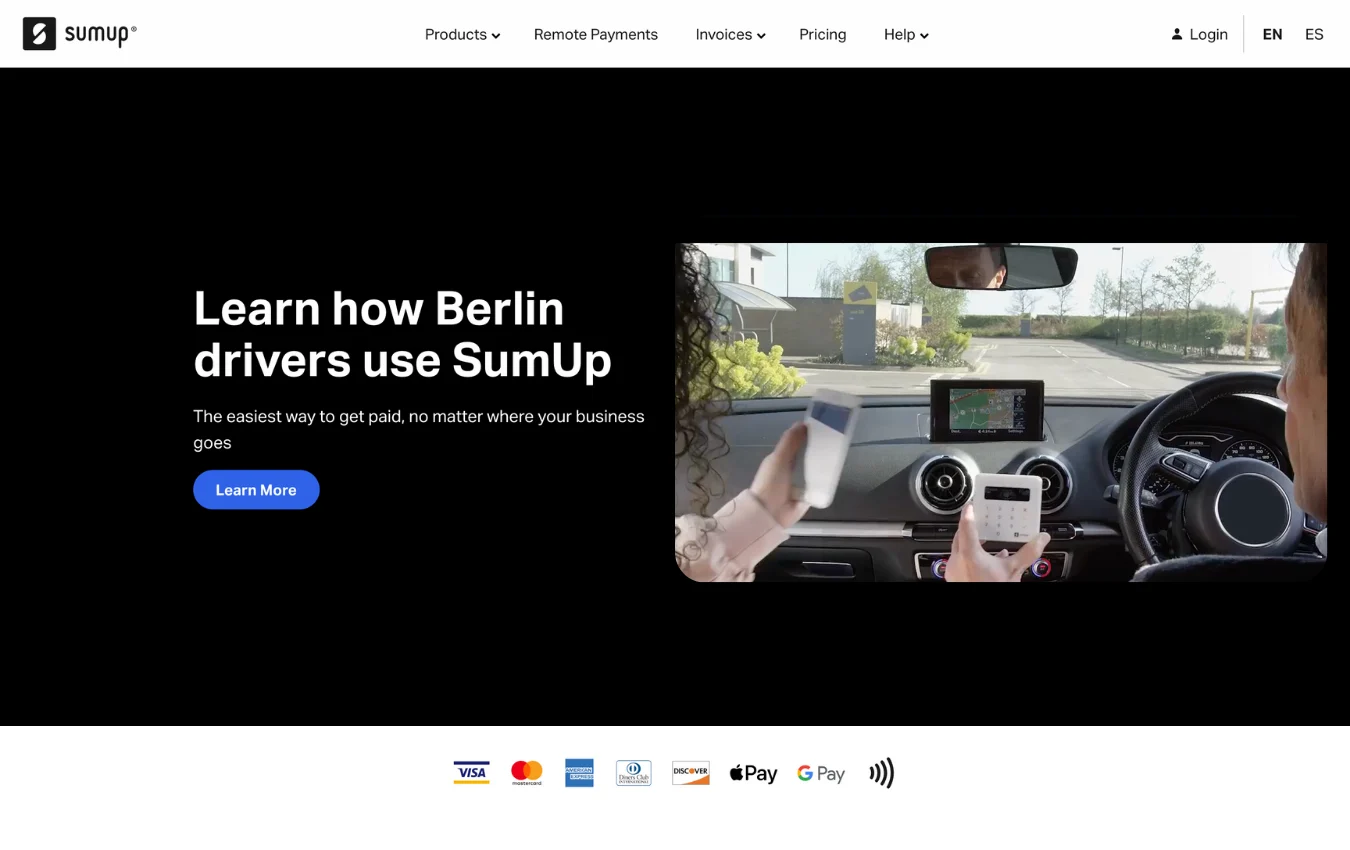
2. CTA (Call to Action) Personalization
The main purpose of CTAs is to get people's attention and entice them into taking specific actions such as signing up for a newsletter list, downloading an e-book, watching a video tutorial, or filling out a contact form.
CTAs are the perfect way to personalize your website and provide people with a clear path based on who is viewing your content.
You can create various CTAs based on different firmographic, behavioral, and psychographic data. Here are some examples of CTA personalization:
Different CTAs for people based on their sales funnel stage.
Showing specific CTAs to visitors that fit into your target customers.
Change the CTA for customers and non-customers.
Here, in this example, Sezzle can show different CTAs for its customers and non-customers:
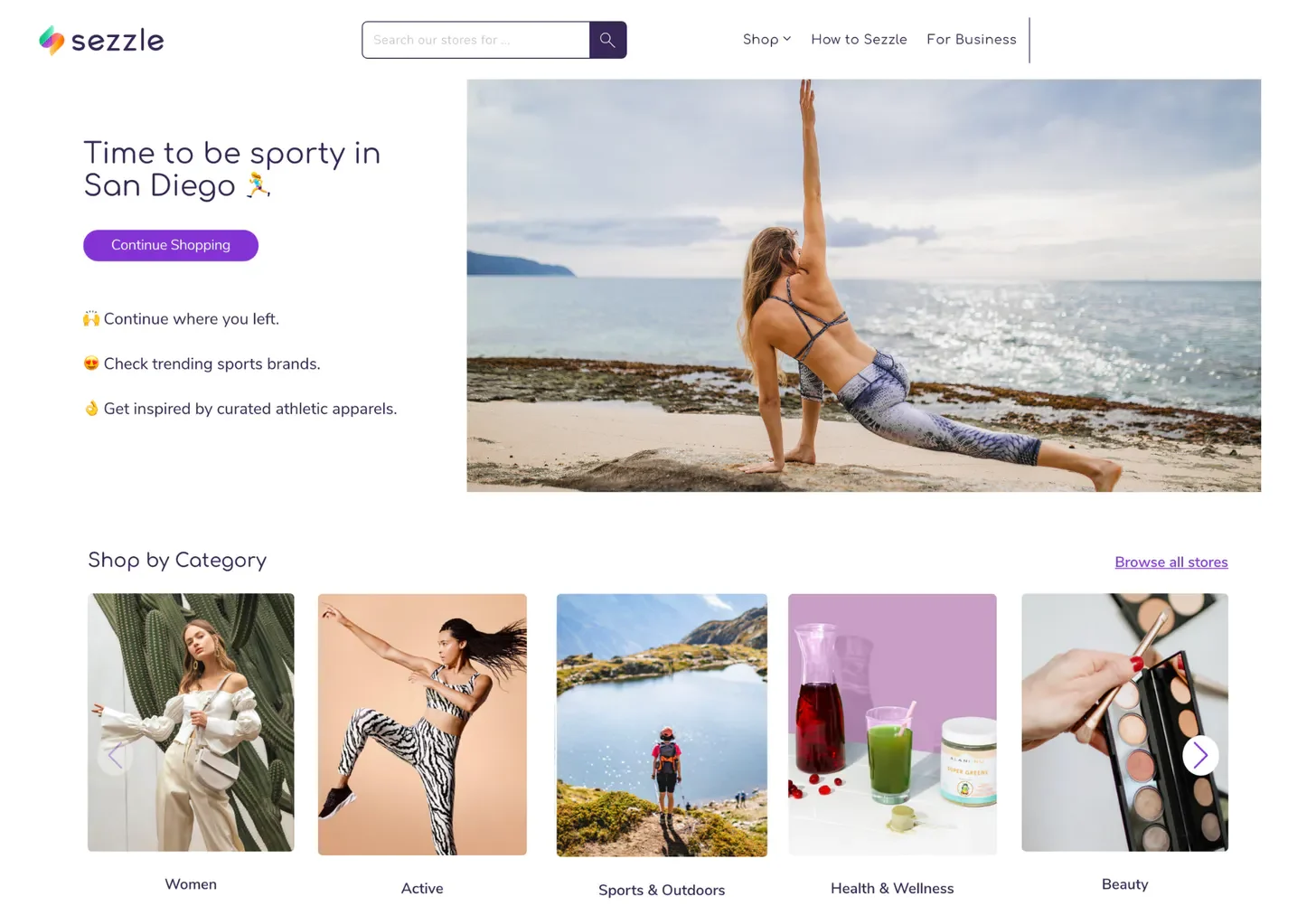
3. Hero Image Personalization
The hero image is another part of the hero section of the website, along with the headline and CTA.
We all know that personalization is an essential part of any marketing strategy because people prefer personalized offerings over generalized information.
Tailoring your offerings around specific interests can make all the difference when trying to connect with your customers. Just like headline messages, images are also playing a huge part in personalization.
Implementing image personalization will not only drive more conversions but also create an emotional connection with your customers that they won't find anywhere else.
Image personalization gives marketers an opportunity to craft their message to make it feel like it was created especially for the person viewing it.
With image personalization, you can show different images of products or services depending on the visitor's location, age group, gender, or any other segmentation variable that matters.
Here, in this example, SumUp can show different hero images for its visitors based on their industry:

4. Blog Posts Personalization
With the wide range of content on the internet, it’s important to make your website personalize as best as possible. Personalizing featured blog posts is a great way to make sure you provide the right content for your audience.
It is important to think about your website visitors and what they want when designing the layout of your blog. When you personalize featured blog posts, you are making it clear that you care about their interests and needs. This will help build trust with your audience and make it more likely for people to return again and again to learn more from you.
You can personalize the featured blog posts for every visitor based on specific attributes, including previous reading behavior, geographic and demographic data, or firmographic data, such as the industry.
Here, in this example, Sezzle can show different Blog Posts for its visitors based on gender and previous website behavior:
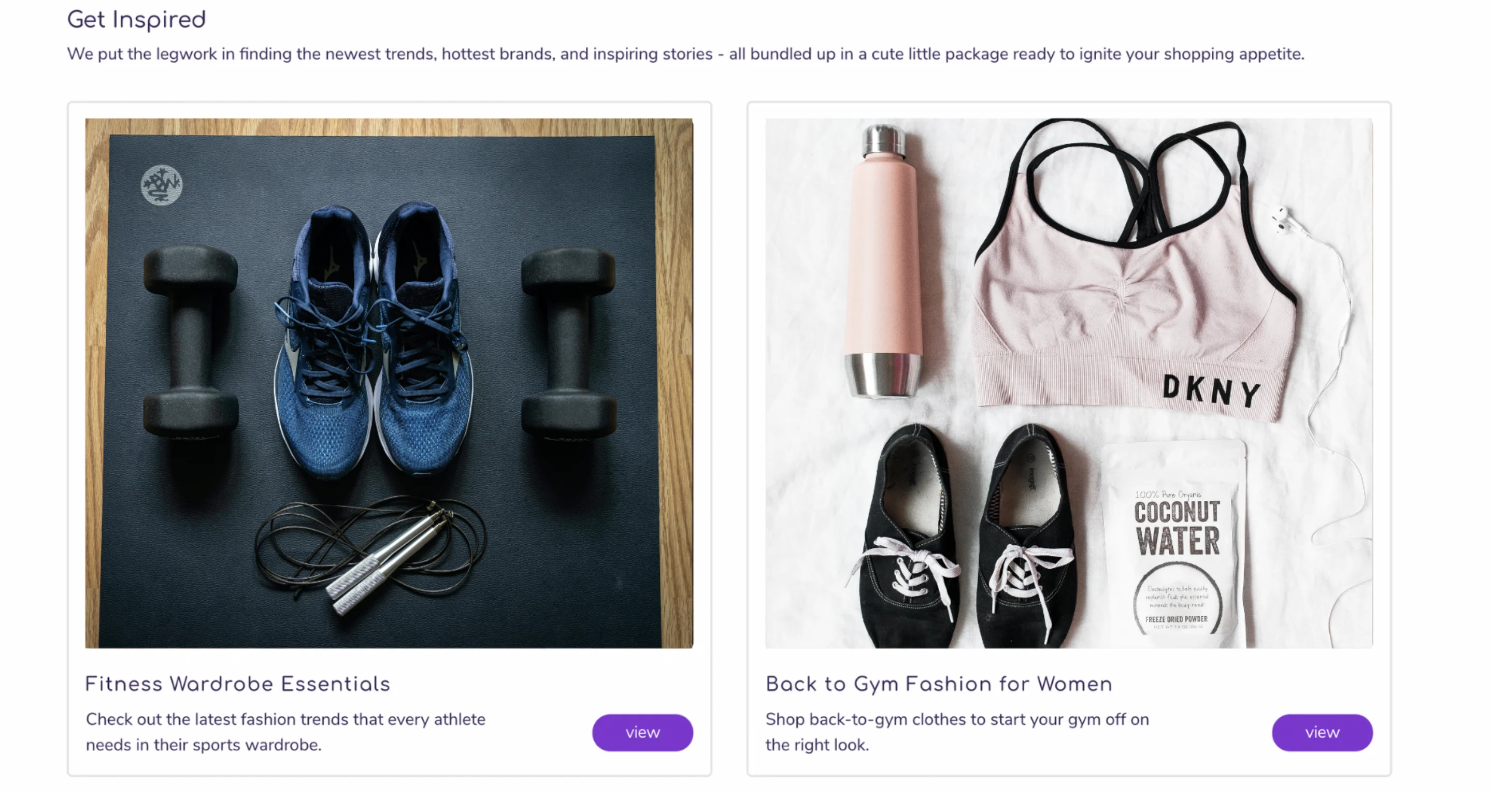
5. Navigation/Menu Personalization
To ease navigation, promote product discovery, and drive more conversions, companies can personalize the order of their navigation menu based on every visitor's preferences.
Users can explore significant aspects of a site via navigation menus, which act as roadmaps for product discovery. However, in some circumstances, they can interrupt the user's experience by displaying irrelevant things.
Personalized navigation can make it easier for visitors to find what they are looking for on your site and drive conversions more efficiently by optimizing and reordering specific components on the navigation bar/menu based on a user's preferences.
Here, in this example, Sezzle can show different Navigation for its visitors based on their previous website behavior:
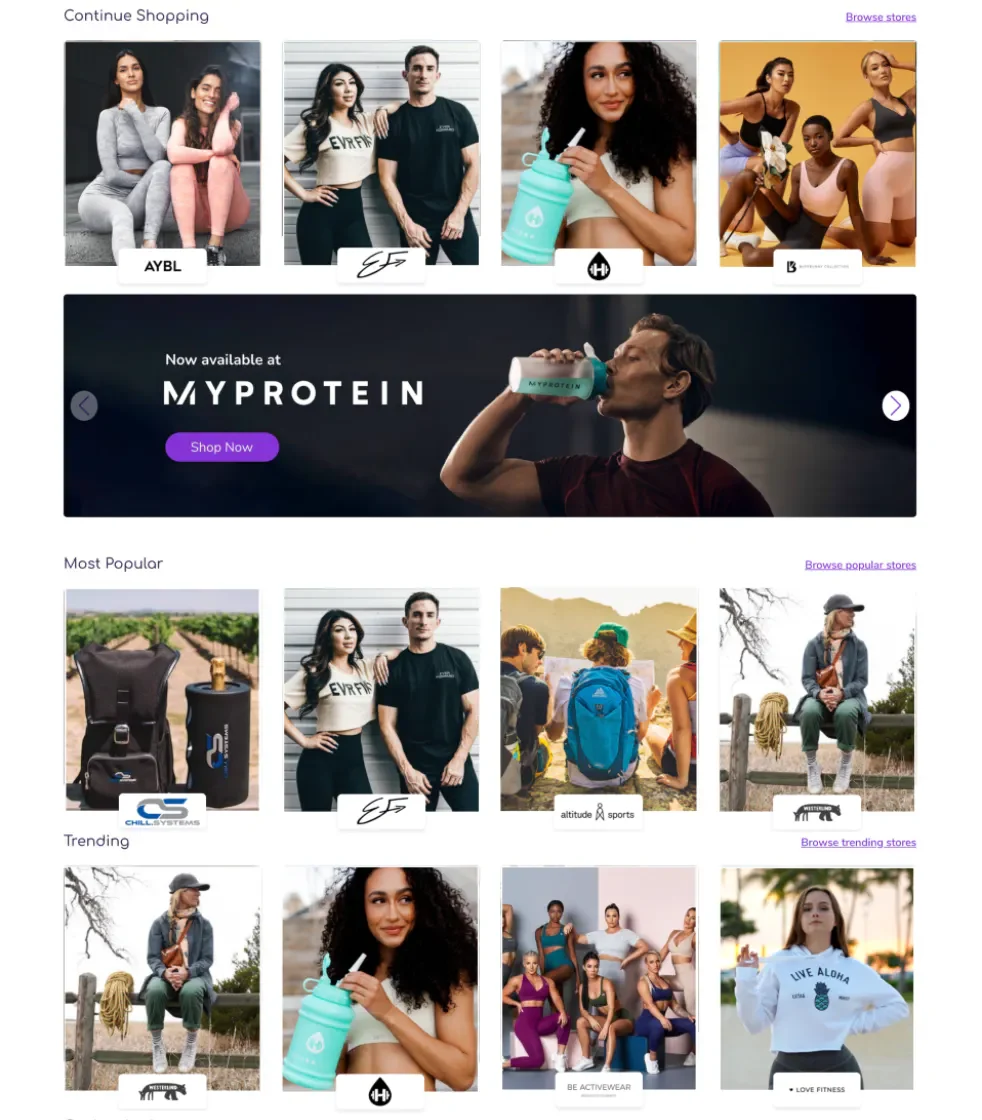
6. Social Proof Personalization
Social proofs on your website add instant credibility to the value you're promising. Companies are using different types of social proof across their website. Although there are plenty of different types, here are three main social proof categories commonly used by companies:
Customer Testimonials
Product Reviews
Customer Logos
As competition for customer attention increases, companies are looking for new ways to stand out from the crowd. One way that businesses are using to achieve this is by personalizing social proofs on their websites.
You can personalize the examples of social proofs for each target audience by using relevant logos and testimonials to match their wants and needs.
Therefore, visitors from the gaming industry can see company logos and testimonials from related gaming companies, while visitors from other industries see social proofs related to their industry.
Here, in this example, Spendesk can show different Social Proofs for its visitors based on their industry:
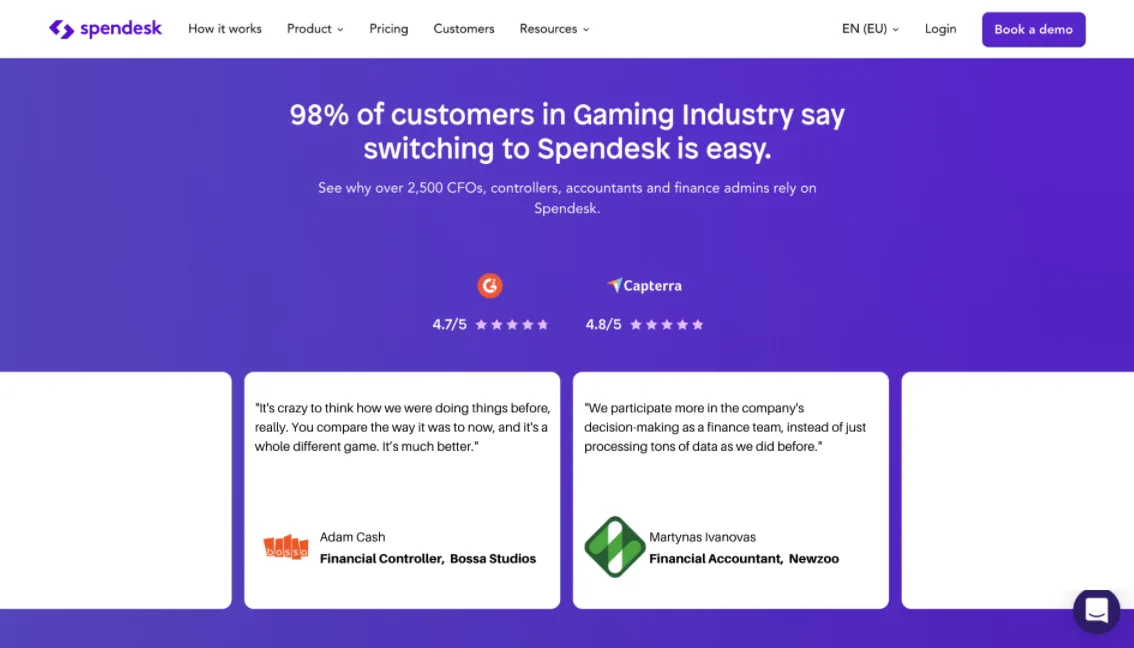
7. Product or Feature Personalization
Showing the right product or the right features to the people that resonate most will help increase your conversion rates and customer satisfaction.
Product personalization is a great way of website personalization because it provides the customer with their desired product and helps them find other items that might interest them.
This strategy aims at providing the best experience possible by catering information and services directly to customers, without any need for browsing or searching through lists of products or services. For example, an e-commerce site could offer personalized recommendations that will change depending on who you are as a person (based on your preferences) and what you're looking for in particular (say it's something like "a stylish pair of shoes").
Here, in this example, N26 can show different Product offerings for its visitors based on their needs and wants:
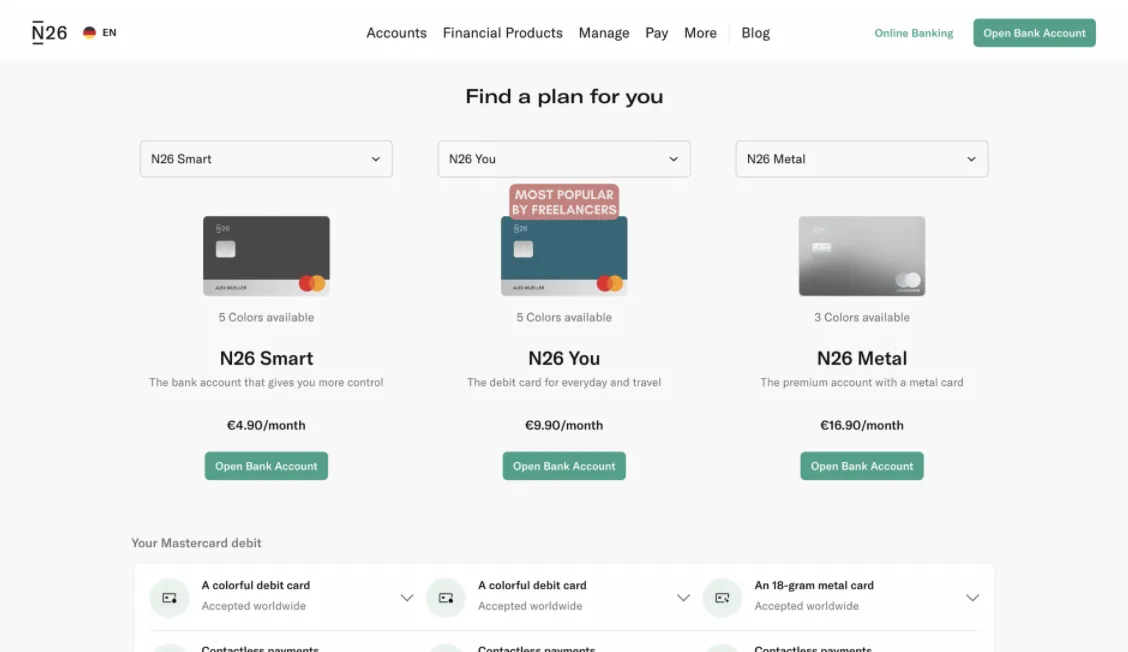
Make Your Website More Personal to Create Compelling Customer Experiences
It's not enough to just have a website.
Your site needs to be engaging, useful, and personalized for your customers.
With website personalization, you need to go that extra mile to make a unique and compelling customer experience.
Creating a personalized customer experience is key to increasing conversions and sales. The more personal your messages are, the better chance you have of closing the deal.
A personalized website will help increase conversion rates by turning visitors into customers.
Get in touch to start creating composable personalization within your content workflow. In minutes